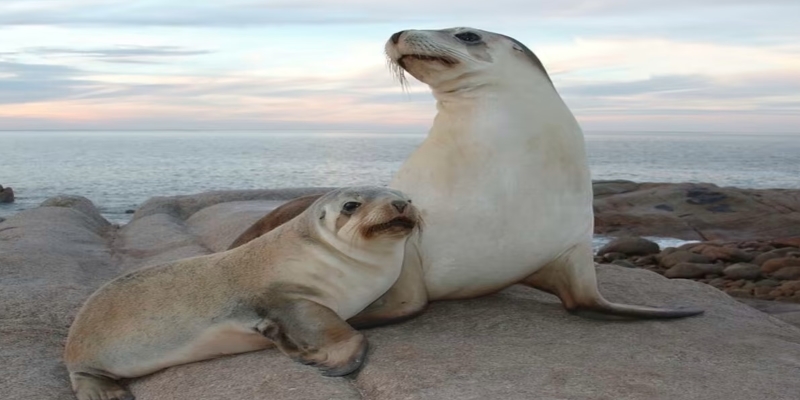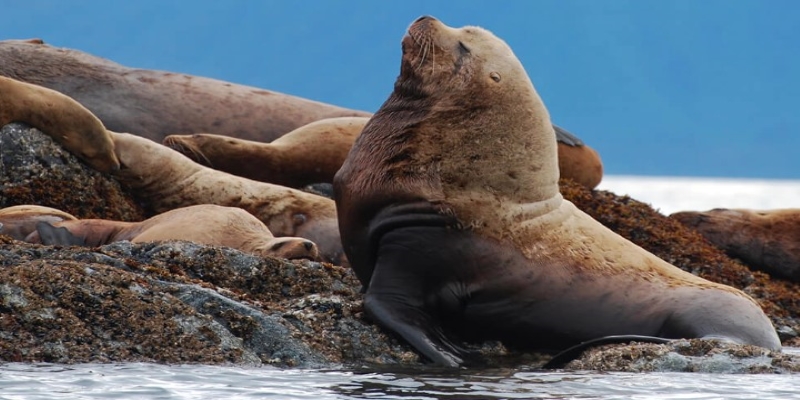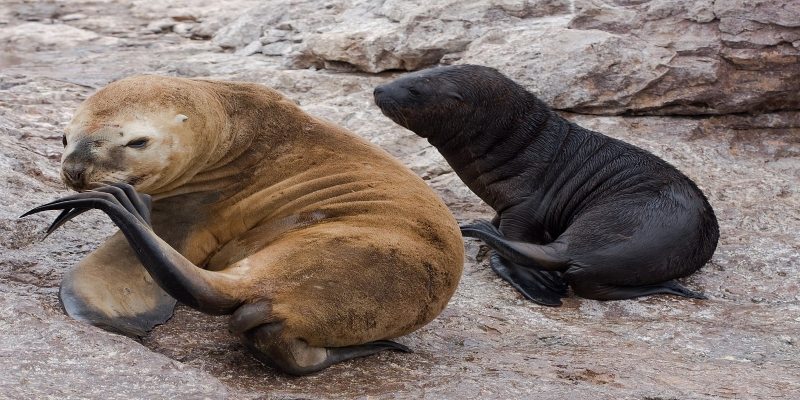The allure of getting up close and personal with South American sea lions is a tempting draw for many tourists. This unique experience, often marketed as a thrilling yet safe wildlife adventure, promises unforgettable memories. Imagine the chance to swim alongside these fascinating marine mammals, witnessing their playful antics up close. However, as captivating as it sounds, theres a side to this encounter thats not often discusseda side that reveals the true nature of these wild animals and the unexpected risks that come with the territory.
As more tourists flock to popular locations like Punta del Este and the Ballestas Islands for this once-in-a-lifetime opportunity, it's crucial to be aware of the potential dangers involved. What seems like a harmless excursion can quickly turn into a nerve-wracking ordeal, leaving many unprepared visitors with more than just memories to take home.
For many, the South American Sea Lion Experience is the highlight of their trip. These marine mammals are often seen as the playful clowns of the ocean, known for their friendly demeanor and curious nature. Whether it's observing them from a boat or diving into the water to swim alongside them, tourists are drawn to the promise of an adventure that feels both wild and safe. Tour operators in regions like Punta del Este, Uruguay, and the Ballestas Islands in Peru have capitalized on this fascination, offering guided tours that emphasize the thrill of close encounters while downplaying the risks.
Sea lions might seem playful and curious, but their behavior can be far more unpredictable than many tourists realize. Understanding these animals beyond their cute and approachable appearance is crucial for a safer experience.

Sea lions, especially males, are fiercely territorial, particularly during breeding season. These bulls protect their territory aggressively, even interpreting human behaviorslike loud noises or sudden movementsas threats. This can quickly trigger aggressive responses. These territorial instincts often catch tourists off guard, leading to risky situations.
Tourists often underestimate the size and strength of sea lions. South American sea lions can weigh over 600 pounds and are built for survival in tough environments. Their sharp teeth and powerful jaws are designed for hunting, not interacting with humans. Despite their bulky build, they are agile and quick, capable of closing distances with surprising speed. A sea lion bite is serious, leading to deep wounds and potential infections.
Sea lions communicate through a range of vocalizationsbarks, growls, and roarswhich signal everything from dominance to discomfort. Tourists unfamiliar with these sounds may approach a growling sea lion, mistaking it for a friendly gesture. Sea lions are naturally curious, but their moods can shift rapidly, especially when they feel crowded or overstimulated.
Female sea lions are highly protective of their pups. Any perceived threat, including a tourist getting too close, can lead to aggressive behavior. In dense colonies like those in Punta del Este, such protective instincts can escalate quickly, especially if the mother calls for support from other nearby sea lions.
Many tourists mistakenly believe sea lions are friendly due to their exposure to human activity. However, this familiarity doesnt mean theyre safe. Wild instincts always prevail, and even seemingly tame sea lions can become aggressive if provoked.

One of the most significant risks of the South American Sea Lion Experience is the unpredictability of the animal's behavior. While most sea lions encountered during tours are used to human presence, this does not guarantee safety. Sea lions can become aggressive without warning, especially if they feel cornered or if they are protecting their territory or young. This is particularly true in crowded tourist spots where the animals are constantly exposed to human interaction.
Another risk factor is the environment itself. Many of these tours take place in open waters where strong currents, rough waves, and cold temperatures add to the danger. Even experienced swimmers can find themselves in trouble if a sea lion suddenly becomes aggressive or if they are caught off guard by the conditions. Moreover, the presence of other wildlife, such as sharks, which are natural predators of sea lions, can introduce additional dangers to the experience.
For tourists considering the South American Sea Lion Experience, its essential to be aware of the risks and to approach the encounter with respect for the animals. Here are some key points to keep in mind:
Understand the risks: Sea lions are wild animals, and their behavior can be unpredictable. Dont assume that they are harmless just because they seem playful.
Follow instructions: Listen carefully to the guidance provided by your tour operator. If you are told to keep a distance from the animals, do so. Do not try to touch or feed the sea lions, as this can provoke an aggressive response.
Be prepared for the environment: Open water conditions can be challenging, especially if you are not an experienced swimmer. Make sure you are physically prepared for the experience and that you have the appropriate gear.
Respect the animals: Avoid getting too close to the sea lions, especially if they are resting or if you see young pups. Give them space to move freely and try not to disturb their natural behavior.
Know what to do in an emergency: In the unlikely event that a sea lion becomes aggressive, try to remain calm and slowly move away from the animal. If you are in the water, get out as quickly as possible.
The South American Sea Lion Experience offers a unique opportunity to connect with nature in a way that few other activities can match. However, its important to remember that these are wild animals, and with that comes inherent risk. The thrill of swimming alongside sea lions should not overshadow the need for caution and respect. In the end, a healthy respect for the wild is what ensures that encounters with nature remain both thrilling and safe.

By Vicky Louisa/Aug 31, 2024

By Darnell Malan/Aug 26, 2024

By Tessa Rodriguez/Sep 02, 2024

By Kristina Cappetta/Sep 01, 2024

By Sean William/Dec 24, 2024

By Isabella Moss/Sep 02, 2024

By Alison Perry/Sep 01, 2024

By Rick Novak/Jul 13, 2024

By Madison Evans/Dec 02, 2024

By Christin Shatzman/Sep 02, 2024

By Celia Kreitner/Sep 02, 2024

By Kelly Walker/Jul 15, 2024